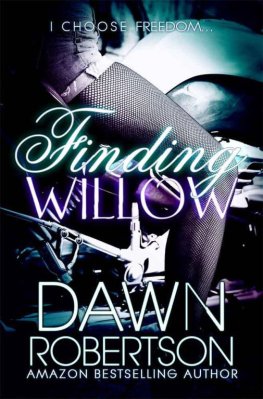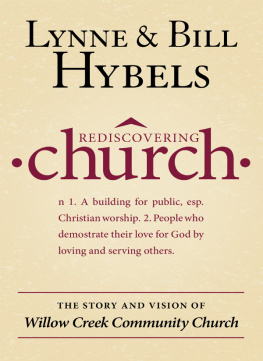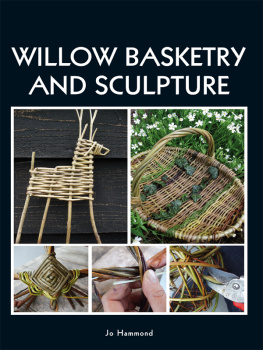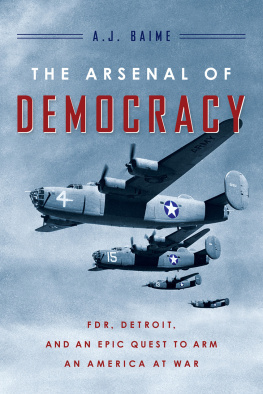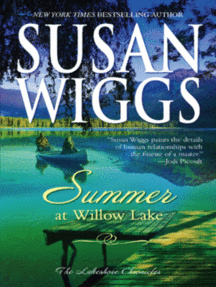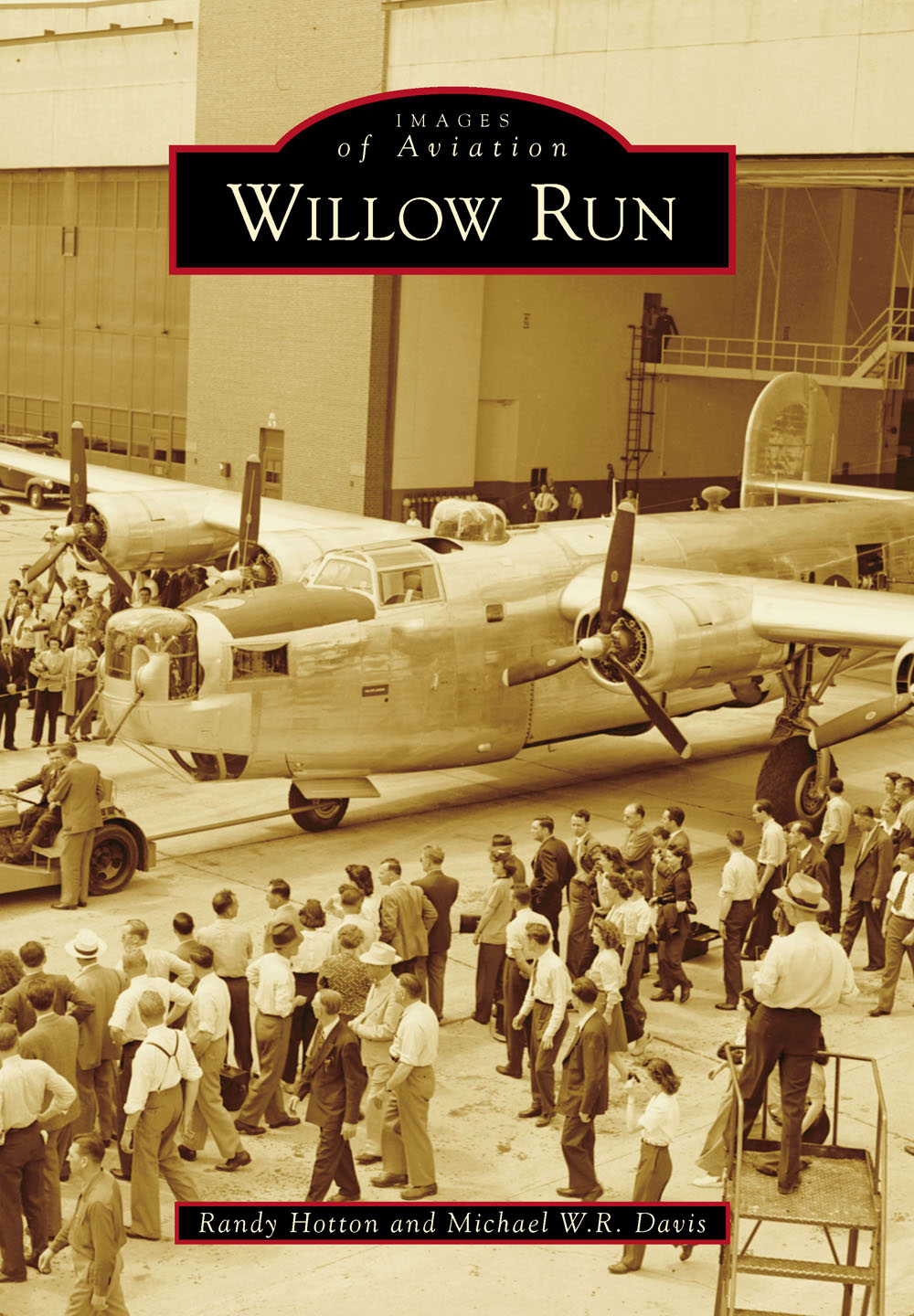
IMAGES
of Aviation
WILLOW RUN

Here is an architectural sketch of Ford Motor Companys Willow Run Bomber Plant and associated airfield as it looked in the spring of 1945, when the last Ford-built B-24 was delivered. (Yankee Air Museum.)
ON THE COVER: On June 28, 1945, the last Ford-built B-24 bomber rolled out of the south-facing doors. Standing by the tractor as the airplane was being pulled out of the factory was Henry Ford II, who was to become president of Ford Motor Company. The airplane was surrounded by the last of the employees who pulled off one on the production miracles of World War II. Even before World War II started for the United States, Ford Motor Company had undertaken an almost impossible task: building four-engine B-24 bombers at the rate of one per hour on an automotive-style assembly line. As the Army stated after World War II, the question of whether the auto industry could be successfully converted to manufacture airplanes left no room for debate. (Yankee Air Museum.)
IMAGES
of Aviation
WILLOW RUN
Randy Hotton and Michael W.R. Davis

Copyright 2016 by Randy Hotton and Michael W.R. Davis
ISBN 978-1-4671-1729-6
Ebook ISBN 9781439658178
Published by Arcadia Publishing
Charleston, South Carolina
Library of Congress Control Number: 2016931943
For all general information, please contact Arcadia Publishing:
Telephone 843-853-2070
Fax 843-853-0044
E-mail
For customer service and orders:
Toll-Free 1-888-313-2665
Visit us on the Internet at www.arcadiapublishing.com
This book is dedicated to Randys father, Andy Hotton, and to all the manufacturing legends of Detroit who made this production miracle possible.
CONTENTS
ACKNOWLEDGMENTS
This book would not have been possible without the help of my coauthor Michael W.R. Davis. Mikes experience in creating several books for Arcadia was an immeasurable resource for me in my quest to put this book together. The support of the Yankee Air Museums executive director, Kevin Walsh, and access to its archives has been exceptional. Particularly Julie Osborne, the museums curator, provided a treasure trove of historic pictures covering the history of the Willow Run Bomber Plant. I want to thank Ryan Jelson and Linda Skolarus at the Benson Ford Research Center at The Henry Ford in Dearborn, Michigan. I also want to thank Malgosia Myc, lead reference archivist at the Bentley Research Center at the University of Michigan, for her help in accessing the Albert Kahn blueprints for Willow Run. Again, thanks go to Thomas Allen and the staff of the University of Texas-Dallas Eugene McDermott Library for their help in gaining access to the Consolidated and Jimmy Doolittle collections. Feiga Weiss from the Holocaust Memorial Center in Farmington Hills, Michigan, was most helpful in obtaining needed photographs. A special thanks goes to Mark Bowen at the Detroit Public Library for his help. Particular thanks are extended to Charles Sorensens grandson Charles Sorensen for his help and to Rose Monroes daughter Vicky Croston for her insights into her mothers life at Willow Run.
All photographs used in this are courtesy of the Yankee Air Museum unless otherwise credited. The following is the key to the other photographic credits and sources:
(HF) From the collections of The Henry Ford, Benson Ford Research Center
(BL) From the Albert Kahn collection, Bentley Historical Library, University of Michigan
(LC) Courtesy of the Library of Congress
(FR) Courtesy of Franklin D. Roosevelt Library Collection
(CS) Courtesy of Charles Sorensen for the Charles Sorensen family
(USHMM) Courtesy of the United States Holocaust Memorial Museum. The views or opinions expressed in this book, and context in which the images are used, do not necessarily reflect the views or policy of, nor imply approval or endorsement by the US Holocaust Memorial Museum.
(NA) Courtesy of the National Automotive History Collection, Detroit Public Library
(TACOM) Courtesy of TACOM Archives, US Army, Warren
INTRODUCTION
I have been a member of the Yankee Air Museum located at Willow Run since 1985. This book is a snapshot of the story that the Yankee Air Museum will tell when it moves into the former Willow Run Bomber Plant.
My earliest memories of Willow Run go back to 1947 when I was four years old. My parents and I were driving out to Willow Run Airport for some reason, and my father pointed to this giant building that seemed to run the length of Ecorse Road. He said, That is where I worked during the war. I built B-24 Bombers. Every time the family would drive by Willow Run, he would repeat this story. When veteran Ford Motor Company manufacturing expert Mead Bricker took over the Willow Run factory and instituted his 505 program, the outsourcing of small parts production became an improved mode of operation at Willow Run. In the 1930s, all Ford dealers had machine shops. These dealership machine shops became largely idle due to World War II wartime rationing of cars, gas, and tires. To utilize this untapped production potential, jobs were assigned to these dealerships, and my dad would set up and manage these projects.
Accounts of World War II are centered around the attack on Pearl Harbor, the great battles at Midway, the landings at Normandy, and the Battle of Bulge. There is no doubt that the heroics and dedication of our military men made these victories possible. But World War II was a war of machines. Those machines would come from American industry that was centered in Detroit. The manufacturing mastery developed in Detroit would save the world from Axis domination.
The United States committed to fight World War II with machines, and the machine that defined Americas war effort was the four-engine bomber. In September 1940, the Battle of Britain had been won; the fighters flown by the RAF Few had defended England, but the four-engine bomber was already identified as the offensive weapon to carry the war to Germany. The auto industry would be become the backbone of four-engine bomber production. The airplanes would have names on them like Consolidated and Boeing. However, inside those bombers you would find parts with names on them like Ford, General Motors, Chrysler, Briggs, Nash, Hudson, Budd, Studebaker, Buick, and Delco-Remy. Ford Motor Company would build a factory to mass-produce four-engine bombers like cars. It would be built beside a sleepy little creek near Ypsilanti, Michigan, named Willow Run, and it would be the largest factory ever built up to that time. The bomber factory would later be called the Willow Run Bomber Plant and would become the manifestation of Americas ability to outproduce anyone in the world.
As the European nations prepared for war, the United States elected to withdraw from world affairs. With the Depression in full swing, the Army Air Corps was a hollow force. The aircraft industry that supported the Army Air Corps was barely surviving on a thin dribble of orders. Soon, though, the White House would want airplanes by the 10,000s. In May 1940, President Roosevelt called for 50,000 military airplanes a year. He then drafted the president of General Motors, William Knudsen, to spearhead this production goal. Knudsen was appointed as the production expert on the National Defense Advisory Commission. He knew this lofty goal of 50,000 airplanes would not be reached without tapping the manufacturing mastery of Detroits auto companies to produce aircraft parts.
Next page

